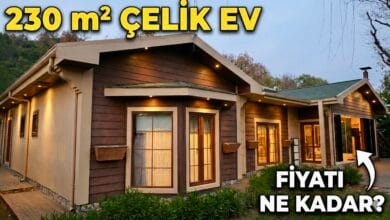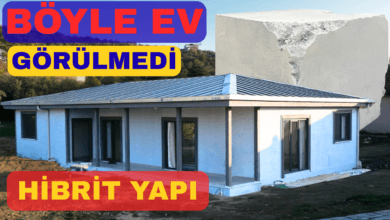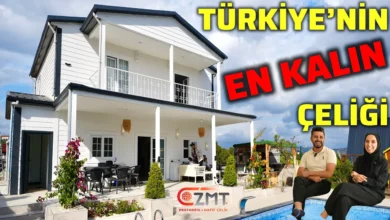This campaign 2+1 prefabricated house model of 74 m² offers a comfortable living space with its modern design and durable structure. Produced by Ideal Prefabrik, one of the leading prefabricated house manufacturers in Turkey, this house has high quality standards.
Technical Specifications:
Wall Height: 250 cm
External Wall Thickness: 10 cm (Fibercement & Betopan + EPS Styrofoam)
Internal Wall Thickness: 6 cm (Fibercement & Betopan + EPS Styrofoam)
Wall Panel System: Pres Panel
Roof Covering Painted Trapezoidal Sheet
Roof Insulation: 10 cm Mineral Wool
Exterior Door Steel Door
Interior Door American Panel Door
Windows Double Glazing PVC (White)
Electrical Installation: Under Plaster
Plumbing Under Plaster
Price:
Campaign Price: 574.000,00 TL
Original Price: 602.700,00 TL
Optional Extras (with price difference):
The wall height can be increased to 280 cm or 300 cm.
Exterior walls can be made with wood patterned or stone patterned cladding.
The interior walls can be finished with plasterboard cladding.
The inner wall thickness can be selected as 10 cm.
The window color can be brown or anthracite gray.
The roof covering can be replaced with a single layer of panels or metal tiles.
Roof insulation can be done with osb-membrane or osb-tyvek.
Frequently Asked Questions:
Services Included in the Price: Supply of materials, assembly, painting, preparation and installation of windows, interior and exterior doors, electrical and plumbing installation.
Responsibilities of the Customer: Ground concrete and excavation works, floor and wall coverings, installation of external connections, obtaining licenses and permits, heating and cooling installations, accommodation and food costs of the installation team, transportation and insurance costs.
Service and Warranty Periods: 2-year installation guarantee and 10-year service guarantee are offered.
For more detailed information and to get a price offer with campaign (prices are campaigned from time to time) Prefabrikevim.com You can visit the address.



